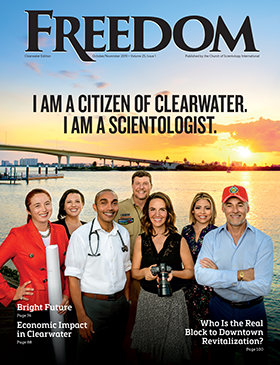
Among the many disquieting aspects of the 21st Century Cures Act, a major health reform bill that passed the House last year and is pending in the Senate, National Center for Health Research President Diana Zuckerman is most troubled by a provision that would allow the Food and Drug Administration (FDA) to approve high-risk medical devices without clinical tests that prove their safety and effectiveness—the benchmark of scientific authority.
High-risk medical devices, called Class III devices, make up 10 percent of all medical devices on the market. They require what the FDA calls “premarket approval” (PMA), which entails passing clinical trials and regulatory review before they become available to the public, thus ensuring they are both safe and effective. However a 2009 Government Accountability Office study found that 66 percent of Class III devices had been approved using another process, called 510(k), which allows the FDA to approve use of a device without clinical trials, because it is “substantially similar” to an existing device. Although permitted on Class I and II devices, the 510(k) process is not supposed to be used for Class III devices.
“More often than not, the highest-risk devices are being approved, marketed and used in patients without any clinical trial data,” an Archives of Internal Medicine article noted, adding that “currently only 1 percent of all devices go through PMA.” According to the latest FDA statistics, PMA approvals of medical devices in fiscal year 2013 numbered just 45, compared with 3,716 approvals under 510(k).

Zuckerman remembers speaking out vehemently nearly a decade ago against a medical device that went though the FDA’s 510(k) process and required post-market clinical trials. It was a novel magnetic therapy machine that looked like an old-fashioned hairdryer and was intended to treat depression by zapping the brain of patients resistant to antidepressants. Called Neurostar TMS, or transcranial magnetic stimulation, the machine was designed as an alternative to electroconvulsive therapy (ECT), which, says Zuckerman, “can permanently damage memory.”
“It’s very expensive—and it doesn’t work at all,” says Zuckerman about Neurostar, adding, “It was ridiculous to approve this product—it has a great placebo effect.” In fact, Zuckerman was amused to hear a Stanford University psychiatrist who defended the machine at a public meeting by arguing that antidepressants, too, mostly work as placebos.
In an illustrious career devoted to safeguarding the health and safety of adults and children, Zuckerman has fought many battles against Big Pharma and corporate medicine.
As a congressional staffer from 1983 to 1993, she was responsible for more than a dozen investigations and hearings, including one that forced the FDA to require safety studies of silicone gel breast implants. Later, she led the first Senate hearings on the medical problems of U.S. soldiers that came to be known as Gulf War Syndrome. And as president of the National Center for Health Research, a nonpartisan, nonprofit think tank in Washington, D.C., she has worked since 1996 on a wide range of health-related policies and programs.
The trouble with the 510(k) approval process is that “if nobody’s looking to see if these devices are safe and effective, they’re going to be potentially very different from the previous devices,” says Zuckerman. As an example, she refers to metal-on-metal hip replacement devices, which were approved on the basis of what the FDA calls “predicates” dating back to 1994. “The new devices were required to be tested but never were until people got really hurt,” she says.
Why the FDA approval process is so slipshod is at least partly rooted in the legislation that first gave the FDA the authority to regulate medical devices in 1976, following the scandal surrounding Dalkon Shield intrauterine contraceptive devices that had made tens of thousands of women infertile or left them with pelvic inflammatory disease. “The law was written as a compromise, and Congress wanted to show that it cares about women,” explains Zuckerman, adding that the FDA saw an opportunity in the law to grandfather in devices already on the market without going through the onerous process of clinical trials. “All they had to do was to show that a product was substantially equivalent to something already being sold, which made perfect sense, given how simple medical devices were at the time.”
Every year, the FDA clears an average of about 400 implanted devices under the 510(k) approval process, according to Zuckerman. Using FDA databases, Zuckerman and her colleagues examined a sample of 50 implanted devices, such as hip implants and vascular devices, cleared through the 510(k) process from 2008 to 2012. They also identified the 1,105 predicates the manufacturers had listed for those devices. The researchers found that scientific data supporting the claim of substantial equivalence were available for just eight of the 50 newly cleared implants (16 percent) and 31 of their 1,105 listed predicates (3 percent). Most of the evidence, says Zuckerman, was nonclinical data.
High-risk devices, such as artificial hearts and most heart valves, must be tested through clinical trials. Although ECT machines are in the FDA’s high-risk category, they have never been put through clinical trials, and now the FDA wants to downgrade ECT to the category of low-risk medical devices.
Lately, Zuckerman has been concerned that the 21st Century Cures Act will help create more ostensibly ground-breaking medical devices, such as the worthless magnetic brain zapper that got her ire not long ago, by eliminating the need for clinical trials altogether.
Under the proposed law, anecdotal evidence and opinion could be used instead of scientific studies to gain approval for new devices. And that’s what worries health activists such as Zuckerman all over the country.
































